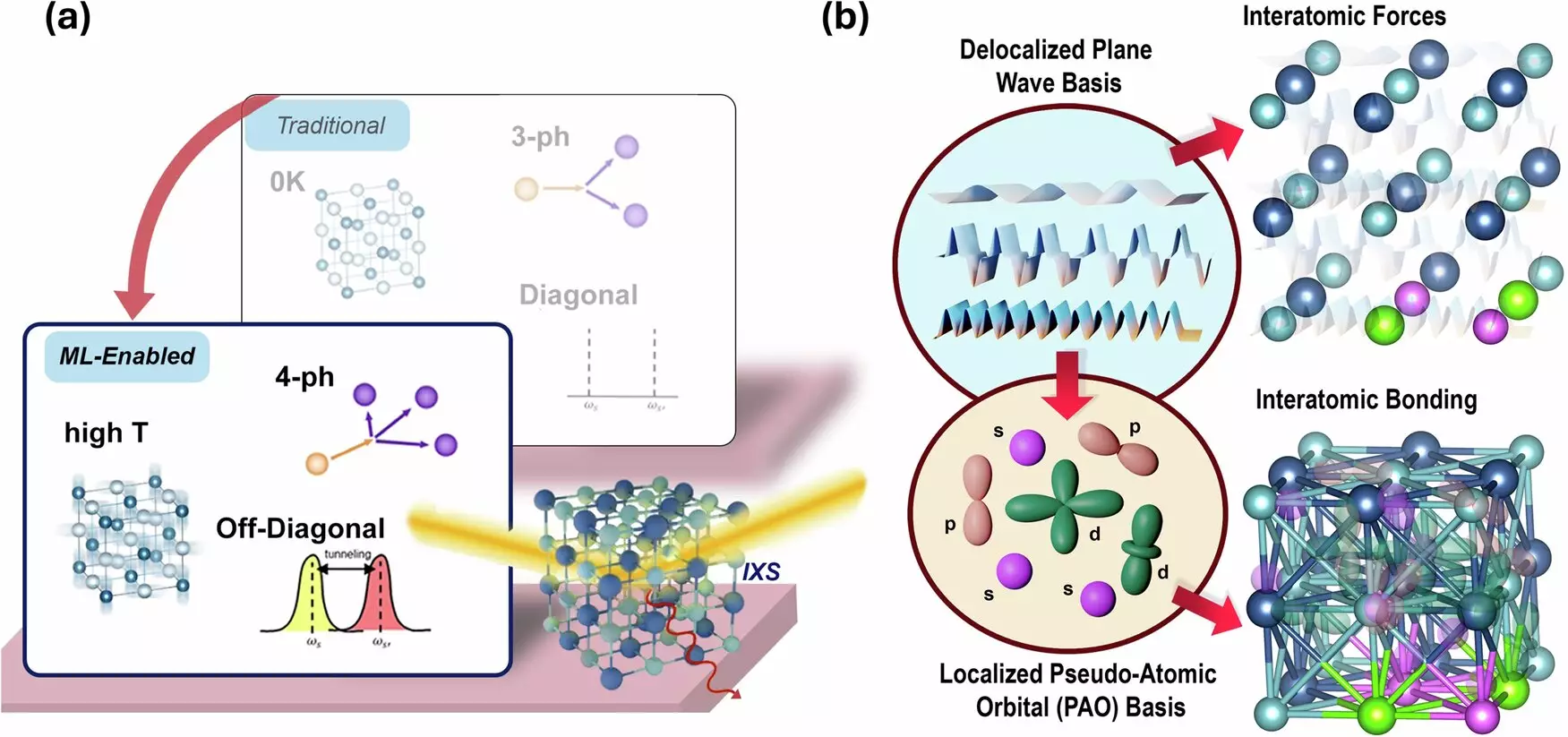The quest for efficient energy materials has led researchers down various intriguing avenues, one particularly fruitful area being phase-change materials (PCMs) like germanium telluride (GeTe). Innovative studies have illuminated the peculiar behaviors of these materials, particularly their thermal conductivity variations at different temperatures. Recent findings from Cornell University have unveiled the mechanisms behind an anomaly in GeTe’s lattice thermal conductivity, leveraging advanced machine learning techniques alongside X-ray scattering measurements. This article delves into these findings, uncovering how this research not only explains a phenomenon but also broadens our understanding of thermal transport in phase-change materials.
Germanium telluride’s cubic phase is particularly noted for an unusual characteristic: its lattice thermal conductivity appears to rise counterintuitively with temperature increases. While many materials tend to exhibit decreasing conductivity with rising temperatures due to phonon scattering, GeTe diverges from this expectation, presenting a fascinating puzzle for materials scientists. The aim of this groundbreaking research was not merely to observe this behavior but to decode its underlying physics. Associate Professor Zhiting Tian and her team undertook this challenge and crafted a paper published in *Nature Communications* that shines a light on the mechanistic intricacies that govern thermal transport in GeTe.
Their study revealed a significant discovery related to the strengthening of atomic bonds within the material as it transitions from a rhombohedral to a cubic structure. By scrutinizing the bond strengths among second-nearest neighbors—Ge-Ge and Te-Te—the research team found an 8.3% increase in Ge-Ge bond strength and a remarkable 103% rise in Te-Te bonds as temperature escalated between 693 Kelvin and 850 Kelvin. This is a crucial nuance that elucidates why thermal conductivity in GeTe is inversely behaving when subjected to thermal stress.
A key player in this research was machine learning, a tool that facilitated advanced computational models capable of simulating complex interactions within the material as temperature fluctuated. Machine learning algorithms can efficiently process vast datasets, enabling researchers to capture multi-faceted interactions—including temperature dynamics, four-phonon scattering, and coherence contributions—in a single comprehensive framework. This integration was pivotal in enhancing understanding of thermal conductivity within GeTe and similar materials, suggesting a new paradigm in modeling materials near phase transitions.
Zhiting Tian noted the computational difficulties posed by pre-existing models when accounting for temperature effects and higher-order interactions. However, by leveraging machine learning techniques, her team could efficiently explore these intricate relationships. This methodological advancement carries long-term implications for energy material research, particularly for materials experiencing abrupt transitions due to thermal changes.
The implications of these findings are expansive, particularly in the realm of thermoelectric applications. Phase-change materials possess the unique ability to exhibit varying optical and electrical properties based upon their phase state, which can be toggled reversibly. This characteristic positions them favorably for innovation in energy conversion technologies. As per Tian’s insights, GeTe has potential as a safer and more efficient alternative to lead telluride—a traditional thermoelectric material subjected to scrutiny due to lead’s inherent toxicity.
Furthermore, Tian’s work also spotlighted additional materials, such as tin-telluride and tin-selenide, displaying similar thermal conductivity behavior. This avenue for further research may pave the way to a wider spectrum of sustainable materials optimized for energy applications, amplifying the prospects of reducing reliance on harmful materials in technology development.
The collaboration between computational techniques and experimental methods marks a significant advancement in materials research, helping to unravel complex phenomena associated with thermal conductivity in phase-change materials. The deepening understanding of GeTe’s behavior, as explored by Tian and her team, not only addresses a fundamental scientific question but also lays the groundwork for future explorations into energy applications. With an emphasis on sustainability and toxicity reduction, the insights gleaned from this research promise to influence the next generation of energy materials, paving the way for innovative solutions to global energy challenges.

